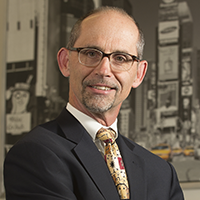Being an Idealist in Difficult Times

The COVID-19 pandemic is a call to action for planners.
On one hand, it shows the value of two essential planning attributes, working with interdependence — with one another and with natural systems — and the value of strategic, long-term thinking. But it also challenges traditional planning methods — we don't know if tomorrow will be a logical outgrowth of today, as assumed in many long-term plans.
The quest for racial justice also calls us to action. In addition to policing reform, the uneven health and economic impacts of COVID-19 reveal the need to be more specific than having a general commitment to the public interest.
Addressing justice raises vital questions about multiple public interests, as well as strategy questions about how we make changes in our roles as advisors rather than deciders.
(Fortunately, tools such as scenario planning can address uncertainty, and there is a host of "inside-out" and "outside-in" strategies for advancing equity and justice.)
Navigating Turbulence: Planners in Uncertain Times
These times also test us at a personal level, as we experience the capabilities and limits of working from home, as well as online deliberation with communities and decision-makers. Current conditions demand adaptability and creativity.
We need resilience to get through this. For planners without employment, job one is to reenter the profession. Those who do have planning jobs face challenges too: returning to workplaces that may not feel safe, workload related to reduced staffing, uncertainty about the future, working from home without collegial support, new family obligations, or simply losing reflection time. It is a lot.
Difficult conditions can be crushing for the idealist planner. Idealists often carry an image or model of what "should be" in their heads, and surely many of us find that the current reality it is out of synch with our aspirations.
Confusion, despair, nihilism, and/or rigid adherence to ideology can emerge when the ideal and reality are too far out of alignment. In this regard, idealists may have a harder time with this than realists, who may more readily accept the moment and focus on the next step.
How can idealist planners be effective in these times? If idealism is thought of as expecting that a certain vision of the future will unfold by our planning efforts, it is surely less possible. Such a view may have been an illusion all along. Rather, we can focus our idealism on the paths to a better future, one that admittedly has many unknowns.
There are better and worse ways to proceed — ways that involve more rather than less justice, sustainability, community livability, and economic recovery. The usefulness of an idealist compass direction for professional practice is not diminished by all the constraints, problems, and human suffering occurring in our communities.
Embracing Ideas Amidst Professional Challenges
I am an idealist planner. I do not feel any contentment right now. The gap between my vision and my daily reality is huge. From time to time, glimmers of hope emerge amid gloomy feelings. All I know is that I must do my work as best I can.
In difficult times, I return to ideals.
My planning agenda is animated by transcendent commitments to advancing love, justice, truth, and beauty. I ask myself if my efforts address those elements, using a focus on these broad commitments to clarify day-to-day practice decisions. My goal is to bring those commitments forward in my planning work, today, the next day, and the day after that. Importantly, that is something that is fully within my control.
Drawing on Joseph Campbell, perhaps another way of saying my point is the following: this may not be a time for following your bliss, but one in which you should "follow your blisters." Planners have the privilege of being part of the solution to the vexing challenges we face.
This blog series is amplified in Richard Willson's book, A Guide for the Idealist: How to Launch and Navigate Your Planning Career. The book includes perspectives, tools, advice, and personal anecdotes. It is available now at Routledge, Amazon, and most retailers.
Top image: Getty Images photo.



